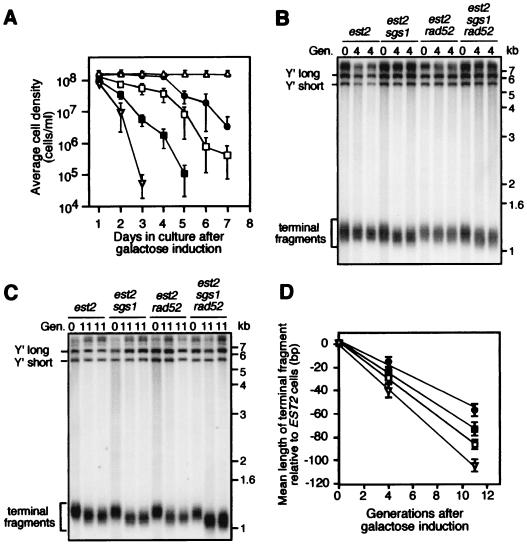Figure 2.
Senescent phenotypes and telomere loss rates of sgs1, est2, and rad52 mutant combinations. (A) Five cultures of est2 (●), est2 sgs1 (□), est2 rad52 (■), and est2 sgs1 rad52 (▿) and two cultures of wild type (▵) carrying the Cre-loxP EST2 recombination system were pregrown in glucose-containing medium and then serially passaged each day in galactose/raffinose-containing medium. Cultures were inoculated to 1 × 105 cells/ml and grown until the wild-type culture reached a cell density of 1.4 × 108/ml (≈10 generations of the wild-type strain/passage). We estimated that the strains had undergone ≈30 generations before day 1. To determine the rates of telomere loss, glucose-grown cells (generation 0) were resuspended in galactose/raffinose-containing medium and harvested for telomere analysis exactly 4 and 11 generations later (B and C, respectively). XhoI-digested genomic DNA was probed with a Y′ sequence after Southern blotting. Lanes 1–3, est2; lanes 4–6, est2 sgs1; and lanes 7–9, est2 sgs1 rad52. (D) Mean terminal fragment lengths of est2 (●), est2 sgs1 (□), est2 rad52 (■), and est2 sgs1 rad52 (▿) strains after growth in galactose/raffinose-containing medium. For each strain, nine independent cultures were assayed, and each culture was assayed by using three independent blots. Mean terminal fragment lengths (±SD) are shown relative to the glucose-grown control (0 generations).

